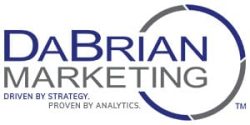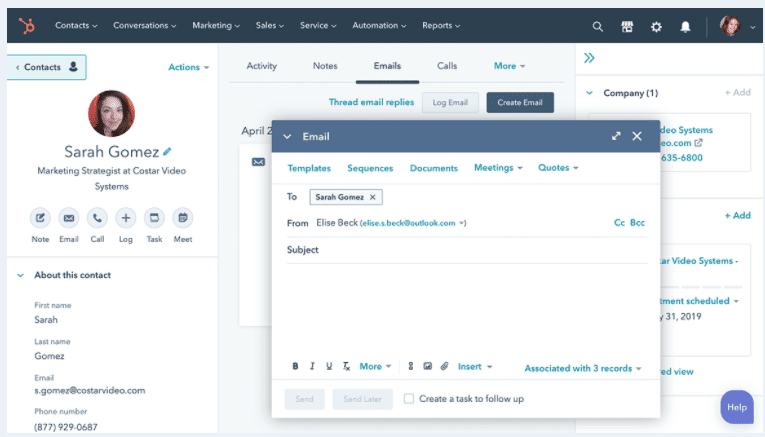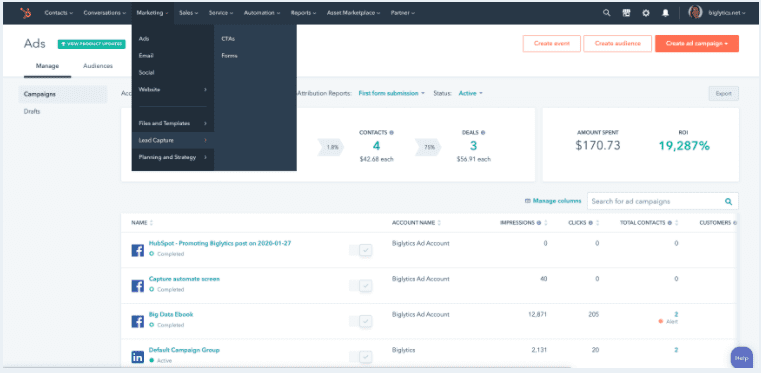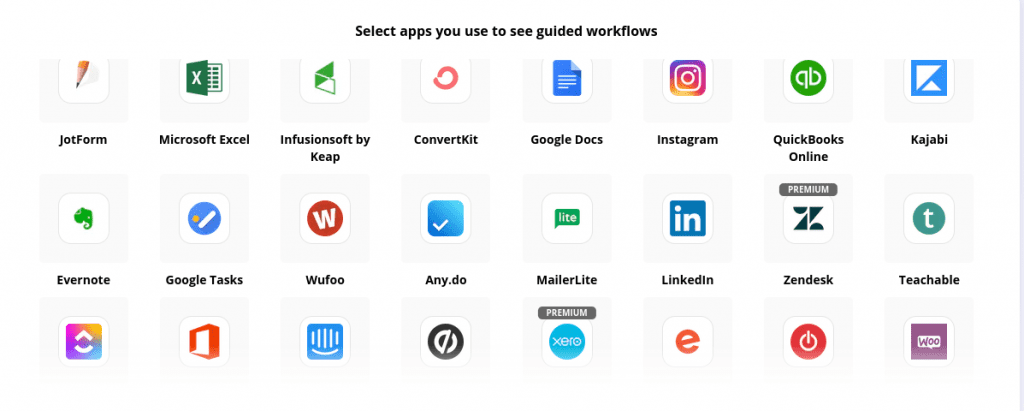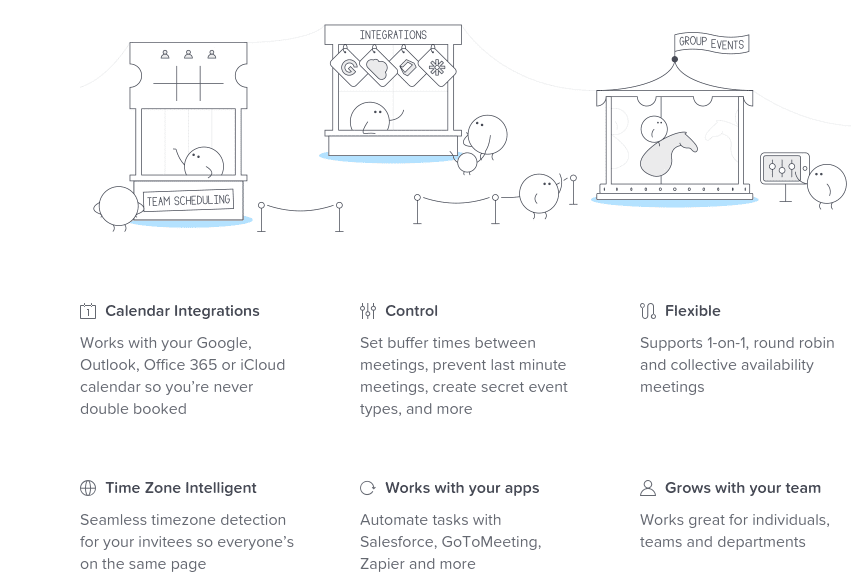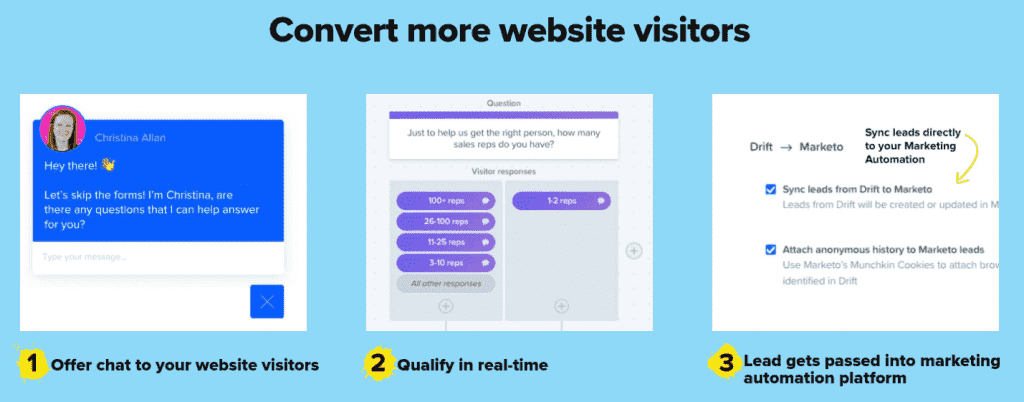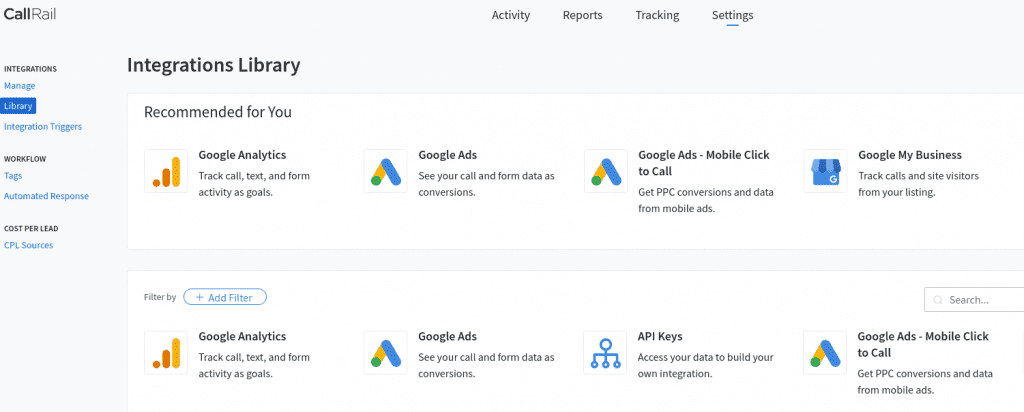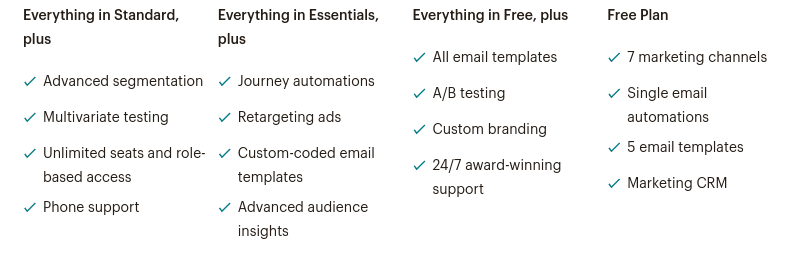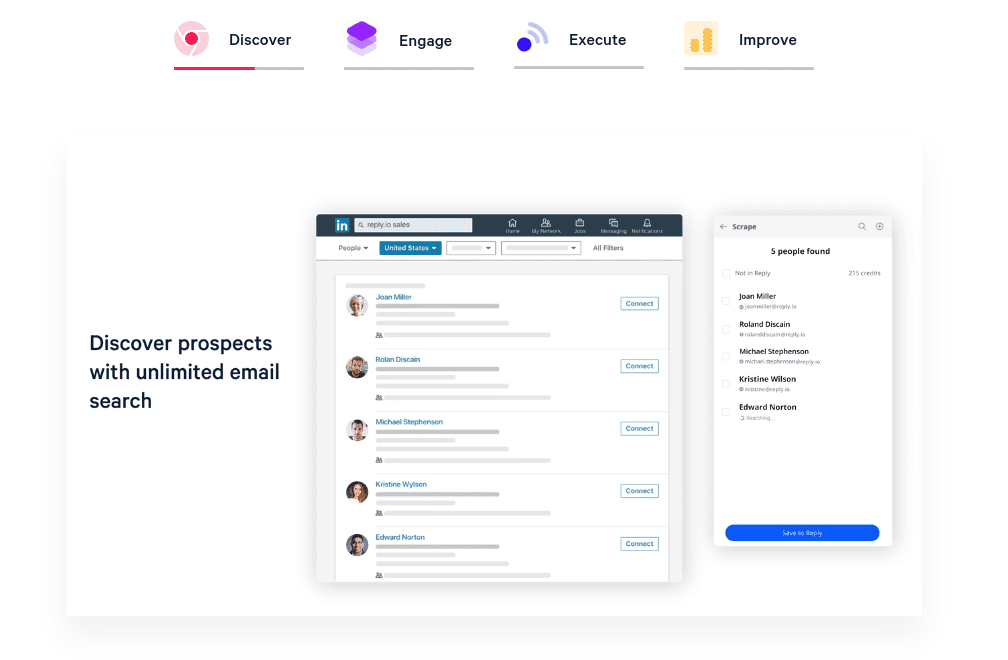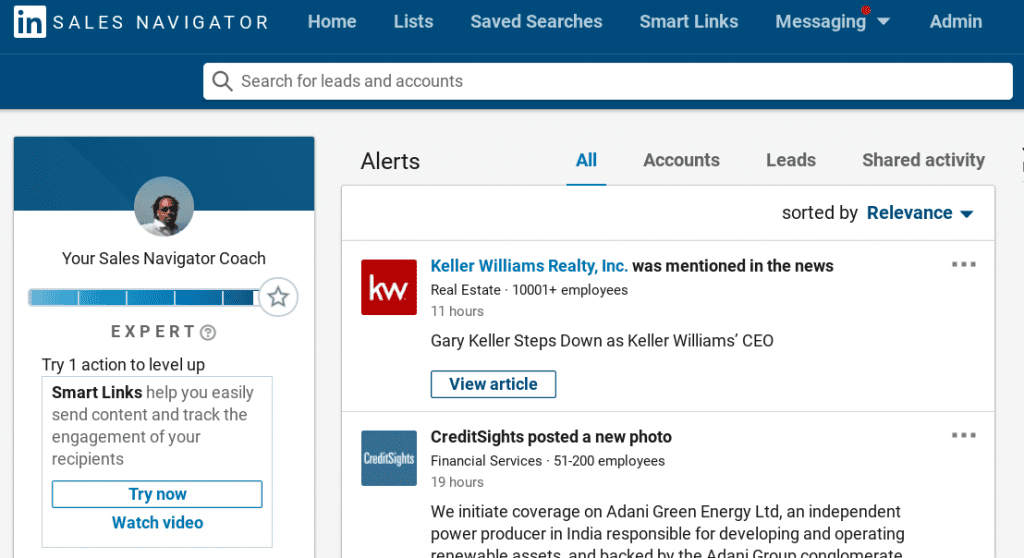Daniel Laws
The Difference between Content Marketing and Inbound Marketing
Content Marketing and Inbound Marketing are the same things, right? It’s a question that I often receive from business owners, marketers, and sales executives. Content marketing is associated with being an approach while Inbound marketing is identified as a way of doing business.
Content is an important part of inbound marketing but that doesn’t mean that content always equals content marketing. There are tactics that exist outside of the scope of content marketing that are specific to inbound marketing such as SEO, social posting, etc.. Limiting your approach will limit the potential impact your marketing efforts will have on revenue growth. Your approach will also have an impact on the skills, talents, and tools needed to execute.
What is Content Marketing?
According to the Content Marketing Institute, content marketing is a strategic marketing approach focused on creating and distributing valuable, relevant, and consistent content to attract and retain a clearly defined audience to drive profitable customer action.
70% of marketers are actively investing in content marketing. (HubSpot, 2020)
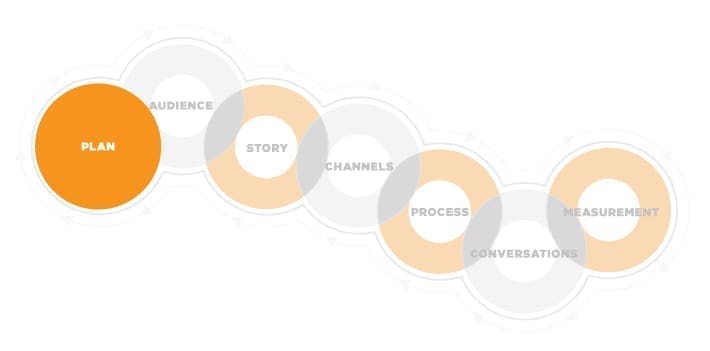
Source: Content Marketing Institute
This approach takes into account creating and distributing content. It focuses on telling the story, the most effective channel to deliver the story, and engaging in conversations. Often people think of it as brand awareness and good content is the foundation of any marketing campaign.
Types of Content Marketing
Content marketing is presented in several types of or formats such as:
- Blogs
- Video Content
- Ebooks
- Guides
- Case Studies
- Resources
- Newsletters
- Podcasts
What is Inbound Marketing?
HubSpot defines inbound marketing as a business methodology that attracts customers by
creating valuable content and experiences tailored to them. While outbound marketing interrupts your audience with content they don’t always want, inbound marketing forms connections they are looking for and solves problems they already have.
This approach takes into account the buyer journey and the overall user experience. It’s not so much about the products or services, rather, it is about solving the challenges potential customers are facing at every stage.
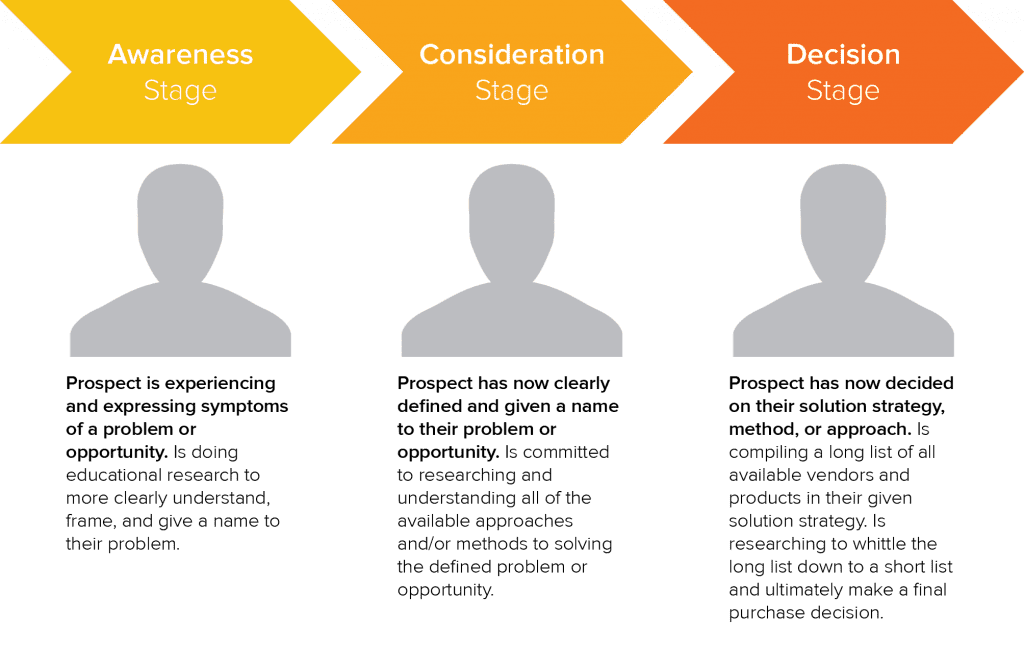
Source: HubSpot
Types of Inbound Marketing
Inbound Marketing often consists of the following:
- Blogging
- Search Engine Optimization
- Social Media Management (Posting)
- Video Marketing
- Ad Development & Landing Pages
- Content Creation
- Email Marketing
Does the Approach Really Matter?
It’s about creating pieces of content that delivers results for your target audience. Determine your approach and start with a content marketing strategy or inbound marketing strategy. All of your content should conclude with a “call to action”. A call to action is an invitation for the users to take the desired action. For example, “Subscribe to our blog to get the latest in your inbox weekly!”
How to measure the success of the content and inbound marketing?
Before you start with the content or inbound, evaluate your ability to measure the results. For example, if your content or landing page says “Call Now!”, I recommend that you:
- Have a method to measure the number of telephone calls received as a result (call tracking).
- Determine the goals and objectives for each piece of content associated with your approach.
- Create a list of key metrics that you’ll track and record periodically.
In our experience, keep it simple with engagement metrics and expand from there. Don’t be afraid to test new ideas and delivery methods.
How to Transition Marketing Staff and Hand Over the Reins
In the COVID-19 world, we’re all just trying to survive. That includes navigating remote work, medical leave, layoffs, and co-workers leaving their existing jobs for opportunities that are better for their families. Keeping all of it organized and everyone on the same page is more important than ever. That’s why we’ve put together a marketing checklist of things that businesses should do while in the transition to better position their employees and marketing departments for success.
Ensure You Know What Marketing Projects are In Progress
There is always work to be done so make sure that you know what projects are in progress so you can plan accordingly and assign responsibilities to existing employees or a new hire. Look to understand the role, deadlines, and the employee’s involvement in all projects. I recommend that you gather a list of projects, the employees, the deadlines, and specific responsibilities all in writing so you have a reference document. Depending on the complexity, consider project management software that includes a marketing project template, such as Asana.
Obtain Marketing Plans, Strategies, Goals & Objectives
Collect all existing versions of marketing plans, strategies, goals, and objectives for your existing employees. These documents should have insights that will help the next employee or marketing agency hit the ground running! Find out how you are tracking progress against annual and quarterly goals and objectives. This should save you time, money, and the effort of creating marketing plans or strategy from start to finish. New to marketing strategy? Start by getting your digital marketing priorities in order.

Get Key Contact Information for Marketing, Sales, and IT
Collect the contact information of key players in marketing, sales, and IT. This list of key contacts should include internal and external stakeholders. These contacts will be able to provide historical information and insight into existing marketing projects and marketing plans. Make sure key information is shared with your team.
Gather all of the information about the marketing department so that the next person has an idea of how things work. For example, you should have organizational charts, product/service information, process guides, manuals, etc. These documents will provide your people with a sense of direction, knowledge of processes, and points of contact that will make it easier to get work done.
Examine Marketing Vendor & Partnership Agreements
In most cases, you will have multiple vendors or partners to help with different aspects of your marketing. For example, who do you use for print materials, hosting, and digital marketing solutions? It’s also important to understand what you own versus what you rent. Some web design agencies will say that you own your website but you cannot move it to another web host or agency. Considering company downsizing and the amount of remote work currently being done, it’s key that you examine your agreements to ensure you’re still getting the services that you were promised. Acquire all agreements and make sure you understand the scope of work.
Do not hesitate to contact these vendors and providers to assure yourself of these services and promises. In the post-COVID world, it is imperative to be sure you are receiving what you are paying for. Six months into this new environment, your business partners, by this time, should have their feet on the ground and operating efficiently and effectively to serve you. If not, perhaps reexamine your partnership.
Inventory Your Marketing Tools
Depending on the complexity of the Customer Relationship Management (CRM) tools, it could cost your business anywhere between $12 to $300 per month for each user. Build a list of all of your marketing and sales tools. This list of marketing tools will give you information to show you where you are overspending or have redundant tools. Understanding what tools you have will help you to transition duties to another employee and obtain support to get the most out of your tools. In my experience, it would be wise to start your marketing and sales list with your CRM, email marketing platform, social media publishing tool, etc. because these are commonly used among businesses no matter the industry.
Know What Reports the Employee is Accountable For
The marketing department usually has daily, weekly, and monthly reporting which funnel into executive reporting. Request an example of these reports for your reference. Our clients have had success in having discussions about who is responsible, what and where are the data sources, what is the process, and who needs to receive these reports and by what date.

Schedule an Exit Interview & Revisit the Job Description
If an employee is leaving the marketing department voluntarily, you need to gain insight into why. According to Harvard Business Review, exit interviews are key to long-term business success as they help you to keep a pulse on functional units, improve processes, and increase retention. The employee’s feedback can help you to improve the job description for future candidates or uncover issues that need to be addressed. It will also help you in the decision-making process when determining if you will choose your internal employees or outsource some of your marketing efforts.
Create an Onboarding Plan for Staff
Develop an onboarding plan for new employees, transitions in responsibilities for staff, or your new marketing partners. This plan should include obtaining access to marketing tools and internal resources, documentation, training materials, and meetings to confirm or validate their learning as well as capabilities. You’ll see better results by scheduling recurring meetings to measure progress for the first 90 days and throughout the year.

Moving On From Marketing Staff or Ad Agency
According to Spencer Stuart’s 16th annual CMO Tenure Study, the average tenure for Chief Marketing Officers (CMO) decreased from 43 months to 41 months in 2018. You have to weigh the pros and cons of internal staff versus a strategic marketing partner. Going through these steps that we’ve outlined here, give you the information to change processes and procedures, identify talent, and position your business for success with internal, external, or a combination of all marketing resources.
Like what you’ve read? Have we inspired you and given you a springboard for moving your marketing department and business into the post-COVID business arena? Access more valuable information regularly by subscribing to our blog and following us on social media.
What is Inbound Marketing?
Inbound marketing is the methodology of attracting customers by creating valuable and relevant content experiences tailored to potential customers. The process of inbound marketing requires your content to be tailored toward your target audience and buyer personas and their needs. Inbound marketing forms a connection by solving problems that your potential customers have.
What is the Inbound Method?
The inbound methodology is focused on growing your company by building meaningful, lasting relationships with consumers, prospects, and customers. It’s about helping and empowering people to reach their goals at any stage in their customer journey with you. When they succeed, your company will succeed and increase the likelihood of customer retention as well as referrals.
Inbound Methodology is often used in 3 ways:
- Attract: getting the right people with valuable information and actions to establish you as a trusted advisor that they want to engage with. Engage: provide insights and solutions that align with their problems and goals so they are more likely to buy from you. Delight: deliver guidance and support to help your customers succeed with their purchase.
- Engage: provide insights and solutions that align with their problems and goals so they are more likely to buy from you.
- Delight: deliver guidance and support to help your customers succeed with their purchase.
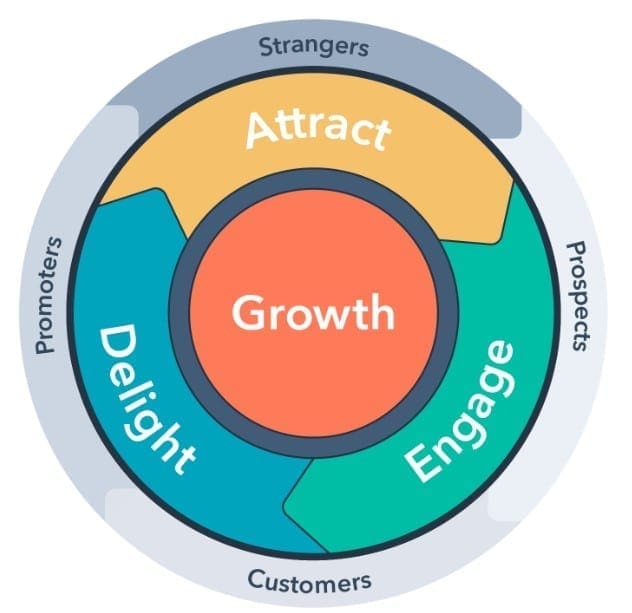
Types of Inbound Strategies
There are three inbound strategies that will help you market to your target audience through the inbound model. Each of these strategies will help your business grow better. Below are the types of inbound strategies:
- Attracting Strategies drive traffic from your buyer personas and target audience by creating and publishing content that provides value and helps potential customers to solve their challenges.
- Engaging Strategies will communicate and connect with leads and customers to build long-term relationships with your business. Actively provide them with solutions to their problems while addressing their needs and wants.
- Delight Strategies ensure that your customers are happy, and provide them with support after the purchase, which transforms you into their trusted advisor as new challenges are presented.
How to Use the Inbound Method in Your Marketing?
Select the inbound strategy that makes the most sense for your business. For example, if you are just getting started, consider working on the attracting strategy. The tools to attract customers are: ads, video, blogging, social media and a content strategy. Create valuable content for your target audience, distribute the content on these channels. Provide an offer (i.e. downloadable, consultation, value-added, discount code, etc.), then measure your ability to attract potential customers. If you need help, you can hire an inbound marketing agency to help you. There are a few HubSpot solution partners in Reading, PA and surrounding states.
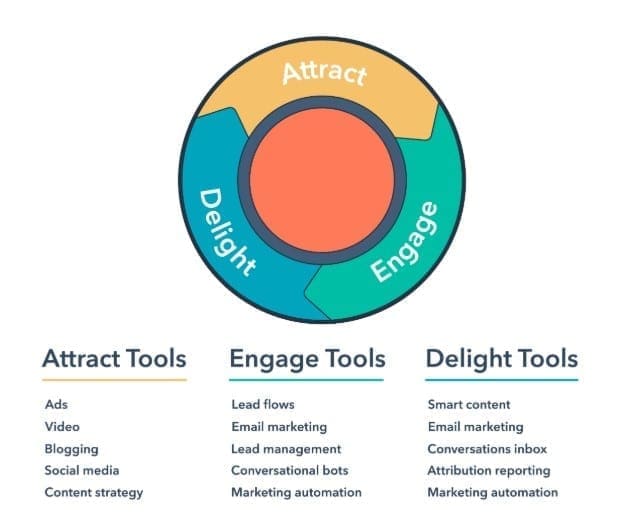
Want to learn more about inbound marketing for your business? Subscribe to the blog and follow us on social media.
5 Steps You Can Take Today to Bring More Traffic to Your Website
Website traffic is an important business indicator and a driver for growth. You get to see how your marketing is working while gathering insight about your target audience. More traffic to your website builds your credibility on the web. It’s important to drive quality traffic that will impact lead generation and sales.
Create a Blog Editorial Calendar & Write Your First Blog Post
A blog is a regularly updated web page that is typically run by an individual or small group and is written in an informal or conversational style. Create a blog schedule or an editorial calendar that zeros in on your target audience questions, concerns, and challenges.
I recommend that the blog editorial calendar include who is responsible for writing, idea topics, and due dates. Start out small with 1 blog per month then make adjustments based on your goals. Consider how you will distribute the content to increase the likelihood that it will get into the hands of potential customers.
69% of businesses attribute their lead generation success to blogging. (Source: HubSpotⓇ)
Develop a SEO Plan to Increase Traffic from Google & Bing
Search Engine Optimization, or SEO, is the practice of increasing the quantity and quality of traffic to your website through organic search engine results. SEO techniques include content creation, linking, site navigation, local business listings, site speed and more. Develop a SEO plan that is specific to your business situation.
Start by getting an SEO or website audit. The website audit will provide information on website issues that are hurting your position in the search engine results. You can get a free evaluation of your website:
The local business profiles on Facebook®, Google My Business®, Yelp®, and Bing Places® also attract more local customers. These business profiles should include reviews, maps, services, a link to your website, and a description of your business. This information is used to populate local listings and provide directions to your local business.
Try the Yext business listing scan to review your business listings.
According to consumers, businesses that respond to reviews are 1.7X more trustworthy than businesses who don’t (76% vs. 46%) Source: Google
Start Social Media Posting on Relevant Platforms
Social media enables users to create and share content, career interests, ideas and to participate in social networking conversations. What social media networks are your existing customers using? Share information that is useful to your customers. Use polls to get their feedback on your products and services.
Use social media as a distribution channel for your blog editorial calendar. I recommend adding a post to your Google My Business profile so that it stands out from others. Use social media management tools such as Hootsuite®, Buffer®, and SproutSocial® to schedule your posts.
LinkedIn’s number of users in the U.S. reached 160 million, making it the country with the most users in the world. (Statista, 2020)

Launch a Paid Search or Social Media Campaign
Paid Search or pay-per-click (PPC), search engine advertising, and sponsored listings are often used to define ad types such as Google Ads (formerly Google AdWords), Google Product Listing Ads, Google Shopping Ads®, and Bing Ads. Paid social media display advertisements or sponsored marketing messages on popular social media platforms and target a specific sub-audience.
Define the goals of the paid search or social media campaign before starting your campaign. Consider the type of ad campaign that would be most likely to succeed. For example, if you are selling ecommerce products, I recommend a shopping campaign. Create the campaign for your target audience that minimizes cost and improves results.
If you are already running a campaign, get a free paid search audit to improve your return on investment.
In 2019 the U.S. was the largest global market based on mobile advertising spending. (Statitsa, 2019)
Create Content for Your Target Audience
Content is high quality, useful information that communicates a story presented in a contextually or visually relevant manner with the goal of soliciting emotion and engagement. The content can be used as part of social media posts and added to your website for SEO.
Create content that is useful to your potential customers and target audience. For example, I recommend video demonstrations, product guides, flyers, and brochures. These content pieces must be accessible via a mobile device.
70% of marketers are actively investing in content marketing. (HubSpot, 2020)
Combine Tactics to Increase Your Web Traffic Today
The increase in website traffic provides businesses with more opportunities to sell products or services. A one-size-fits-all model will not achieve your target results. All of these ideas are connected and will have a greater likelihood of achieving success when used in combination with each other
Understand where your business is going and measure if and how you are increasing traffic. Look to understand what is working and the impact that it is having on your sales. If you need any help, give us a call or check out our other blog posts on these topics.
Get an Inbound Marketing Assessment!
Improve Your Brand, Sales and Improve Customer Loyalty With AdRoll
Online marketing shouldn’t be about guessing, but too often that’s what we have to do when trying to predict what our customers really want and how to make them buy.
Certainly we can sometimes make educated guesses by looking at separate data from all of our different marketing channels, but there’s still some A/B testing and finger-crossing involved that we are using the correct data and have enough of it to make proper decisions.
By incorporating the AdRoll growth marketing platform in your customer outreach efforts, you’ll be able to learn more reliable ways to combine all your analytics into one cross-channel stream and also gain access to all sorts of relevant customer information.
For example, AdRoll provides information on audiences. You can connect your Marketo or HubSpot CRM and target prospects based on their actions. You can also segment audiences based on your site pageviews.

Why use AdRoll?
Using the latest AI tools, AdRoll can blend your first-person data with robust second-party and third-party data to present you with accurate info about your ideal audiences. Clients can access AdRoll’s IntentMap that offers in-depth looks at more than 1.2 billion shopper profiles, including their past purchases, marketing preferences and demographic info. You have the option to run Ad Campaigns or Email Campaign on the platform. The Ad Campaigns can include social media platforms such as Instagram and Facebook. Their display network includes sites such as Yahoo!, CNN, People, and a lot more.
Having all of this data within easy reach can reduce your research time and guesswork and make it easier to target and engage current and future customers.
AdRoll has been designed to easily integrate with common e-commerce platforms such as Shopify, Magneto and WooCommerce, along with a variety of other add-ons. It also includes a social media and email presence to provide more “touches” for your customers and get them even more excited about what you have to offer.
Within AdRoll, you can see the overall impact that AdRoll is having on you business. The Attribution section can give you insight into which channels are generating the most revenue and influencing the time to a sale.
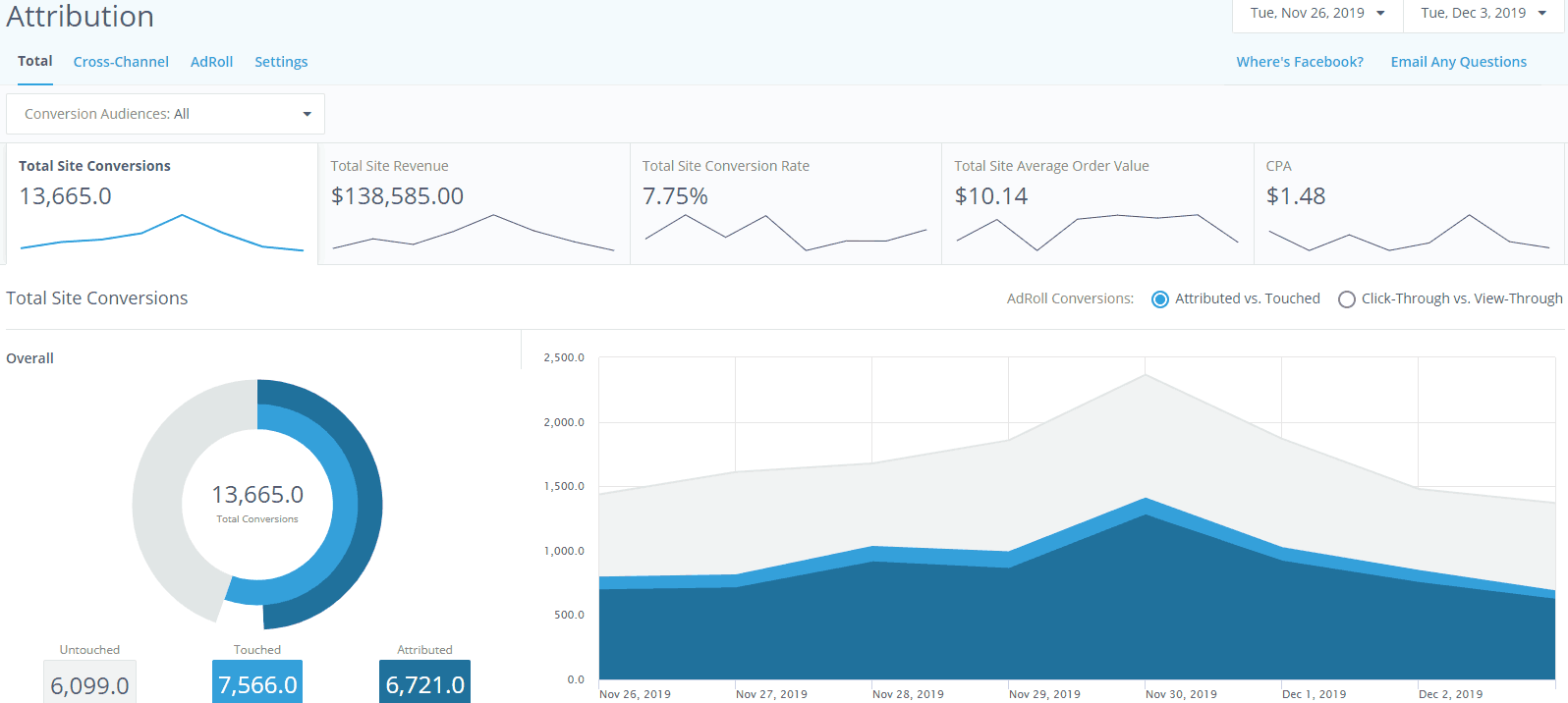
Part of the strength of AdRoll is being able to track every point of a customer’s journey through an ad campaign from awareness to purchase, plus any follow-up. It also includes the ability to optimize certain areas of this journey, including creating different types of customized messages designed to reduce cart abandonment.
Essentially, you’ll learn new solutions to attract business and convert visitors into customers. By creating a positive experience, shoppers will be more likely to remain loyal and return for future transactions.
How DaBrian Marketing can help with AdRoll?
DaBrian Marketing recently has received AdRoll certification, so we’re happy to share our training knowledge on this new platform with new and existing clients to help them better identify their customers, grow their sales and build awareness of their brands.
Though businesses can certainly try to learn this software on their own, it makes more sense to partner with an agency with AdRoll certification to help your business see success.
We’re happy to offer personalized strategies to help you create the perfect campaigns, including useful ways of tracking leads, sales, traffic and overall ROI. This includes looking forward in the short-term and the long-term.
Partnering with an agency with demonstrated knowledge of this platform can mean you have access to an impressive amount of tools, which can cut down on your costs and efforts and also improve your overall effectiveness.

Let us know how we can help you get started!
- Page 1
- Page 2
- Page 3
- Interim pages omitted …
- Page 12
- Go to Next Page »
